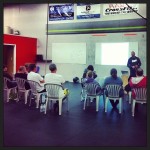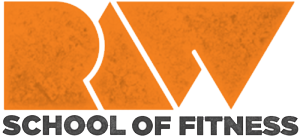Why Should You Pay for Coaching?
 With the amount of free information out there these days, it is tempting, and often easy to acquire new movement skills simply from watching a how-to on YouTube. But, in the context of a highly technical skill or set of skills, the clean and jerk or snatch for example, does this method of learning replace being taught by a professional coach?
With the amount of free information out there these days, it is tempting, and often easy to acquire new movement skills simply from watching a how-to on YouTube. But, in the context of a highly technical skill or set of skills, the clean and jerk or snatch for example, does this method of learning replace being taught by a professional coach?
I would argue no.
Warning, this is a long one. If you want the gist of the argument, skip the the bottom.
Don’t get me wrong, I’ve been there, and still continue to learn new ideas from the interwebs, but it doesn’t, and will never replace learning from an experienced coach.
Let’s go back. In 2006 when I started into my CrossFit adventure, there weren’t too many options to go and learn how to perform functional movements from experienced coaches. Nobody I talked to had ever heard of CrossFit, and there wasn’t a CrossFit box in every town and city (or every street corner as it seems these days). Not that the opportunities to get coached didn’t exist, but they were usually in far away cities, or countries, and cost an arm and a leg. The internet was one of the only accessible avenues to try and learn new movements, and self asses. I would often have to videotape myself performing a rep, watch it, and then try and correct my positioning on the next attempt. It’s a tedious process of back and forth, but I was a University student, and had lots of disposable time on my hands (I probably should have been studying… but in a way, I guess I was).
My first experience with proper coaching came a few months after I found CrossFit as a training methodology. I never “worked out” in high school. I played sports, lots of them, and it left very little time for extra training. Once in University, many of the sports ceased, and I had to look for other outlets. My roommate at the time was into traditional bodybuilding and had a poster of Arnold on his wall. For something to do, I would often go to the gym with him to train. Our program consisted of your classic “globo gym” routine. Back and bi, chest and tri, lots of sit-ups and 20-40 mins of “cardio” after every session (notice the lack of leg days).
After a few weeks of training, I began to notice that I had started putting on bulk weight, and much to my dismay, started to get worse at the sports I was still playing. I couldn’t dunk anymore in basketball, I couldn’t swing my arms over my head to hit a volleyball anymore, and my coordination seemed to always be a bit off.
Back to the drawing board.
I remember doing a Google search for showtimes to the movie “300″ . In the search, a bunch of YouTube videos of what the actors did for training in preparation for the movie came up.
* The guy training these actors is Mark Twight of Gym Jones . A controversial figure in the CrossFit world depending on who you talk to.
What? Tire flipping, ring work, medballs, bumper plates…that you can drop?
I had never seen these items in a gym before, and never seen anyone training like that. I wanted some.
So I stared to do research. I probably stumbled around the internet for a month before I found this obscure, simple looking website CrossFit.com (there is more content now, but the design literally hasn’t changed since I first visited it). Here I was presented with pictures, videos, and articles about movements that I’d never tried before. There was even a daily workout posted to try and a handful of people (20-40) would post their scores in the comments section to compare against each other (how things have changed since then…).
And so it became my routing to check CrossFit.com daily for the workout and then attempt the closest version I could at the GoodLife I was training at. If I encountered a new movement like a thruster, I would Google it, and try and perform what I saw. I had no coach, and for that matter, I couldn’t even find anyone in the entire gym that had heard of CrossFit. After a few weeks of training that usually left me in a hot sweaty mess on the floor, the threats of being kicked out for lifting barbells above my head, and using chalk on the bars started to come from the gym staff.
One day, I was training later than usual (the gym was open 24h). The place was pretty much a ghost-town besides a few other female students going backwards on the elliptical machines, and this older staffer who I’d never seen in there before. He looked like he has some training miles on him, with a barrel chest, stocky legs, and forearms that resembled Popeye’s. After finishing one of my workouts that included clean and jerks and kipping pull-ups, I saw him get up from the desk where he had been watching me and start walking my way. Thinking to myself “I’m finally going to get the boot from this place”, I was surprised when he made the comment “In the 20 years that I’ve worked here, you’re the first person I’ve ever seen do real work”. I was taken aback. He introduced himself as Dave, and we promptly began discussing what I was doing. Dave told me about his background as an ex-Olympic lifter turned retired powerlifter, and how he thought my cleans would be more efficient if I sat back in my first pull position more and lifted my chest up.
And so my routine changed. I began training late at night with the hope that I would run into Dave again. He wasn’t always there, but whenever he was, he would watch some reps, offer some tips (which almost always lead to a PR, or better efficiency), and let me use chalk on the bars.
Dave was unofficially my first coach.
His tips, and watchful eyes kept me progressing, PR’ing, and injury free for the 6 months I had left at school. I wasn’t aware of it in the moment, but this experience advanced my physical abilities leaps and bounds more than I would have accomplished trying to coach myself from YouTube videos and articles alone. In those late night Goodlife sessions, I learned the value of a good coach.
Fast forward a few years, and I found myself in Vancouver after another successful season as a tree planter. The thing about tree planting is it’s almost 100% oxidative. You walk nearly 16KM a day loaded with up to 40lbs of weight around your hips. When you come home each night, you eat more food yourself than a small family eats in a day, and you inhale carbs and sugar like a vacuum cleaner. At the end of the season, you have a fat bank account, but a skeleton of a body. With no reason to come back to Ontario at the time, I decided to stay out west.
Vancouver is fortunately home to Canada’s first CrossFit affiliate, now known as the MadLab School of Fitness/CrossFit Vancouver . Shortly after my arrival to the island city, I checked out CFV’s website, and promptly booked and intro session that, looking back on it now, changed my life forever.
I was finally in an environment where a coach’s eyes on my movements were just an ask away. Did I have to pay for it? Of course. As in any profession, you get what you pay for. With no job, a ridiculously over priced apartment to pay for, and a quickly shrinking bank account, paying for coaching was hard to justify, but I knew that it was going to be worth it. I stopped eating out, stopped going to the bars (as often), started cooking for myself more, and didn’t spend money on time wasters, or things that weren’t contributing to my health and happiness (these decisions alone, probably had a sizable impact on my physical changes). I found a way around the common excuse of “it’s too expensive” simply by making choices that didn’t drag me down financially, or physically. As the saying goes, where there’s a will, there’s a way. Getting better at my lifts, and movements, in improving my health and fitness was more important to me than watching TV, or new clothes, or weekend parties. It wasn’t easy, but the deeper into my training I got, the better I started looking, the stronger I got, the more it motivated me to stay on that path. The better I got, the better I wanted to get, and the more I found myself saving my pennies so that I could afford a PT session with the lifting coach to refine my snatch, or the gymnastics coach to figure out handstands, or the rowing coach to improve my efficiency.
What I learned from these experiences was that a good coach is worth every cent, and that five minutes with an experienced pair of eyes, is better than hours in front of a computer watching YouTube.
Bottom line, if you are hitting roadblocks with your training, or need/want to learn a new skill, find a coach. If that session leads to a movement change that reduces injury, increases efficiency, allows you to move more weight etc, you have now changed your potential self forever, and the money was well spent.
What I came to understand early in my training career is that you need to take a long-term perspective on training. Movement is living. From the smallest scale of bones vibrating in your ears so that you can hear sound, to gross motor patterns like standing up from a chair, your ability to move yourself will directly contribute to your health, well being, and longevity. Studies have shown that as soon as your ability to move yourself decreases, neuro-degeneration in your brain accelerates. Thus, spending money on a good coach who is going to keep you moving is a sound investment in your future health, both physically and mentally.
If a coach can, in one session, get you to change your movement patterns in a way that allows your hips, or knees , or shoulders, to last an extra 20 years at the end of your life, wouldn’t that be worth it?
If a coach can write a program that builds your strength, stresses your skeleton in an adaptive way and staves off osteopenia, or osteoporosis in the process, wouldn’t that be worth it?
Don’t forget, you are born into this world with one brain, and one body. Why are you spending more money maintaining the car that you will probably sell in 5 years than THE ONLY BODY YOU WILL EVER GET? Why are you buying a new iPhone, but letting your gym membership expire? Why are you not getting a PT session for that movement you’ve been struggling with for months?
In summary, if movement is living, and losing the ability to move yourself has been shown to accelerate aging, your future self implores you to get that coaching NOW. Don’t wait till it’s too late and your back is screwed up, or you’ve sat in an office chair so long that your shoulder mobility is unfix-able. Go find a coach, pay them for their time, and get a high-five from future-you for having the foresight to know that taking care of your body now, is the best health insurance money can buy.





There are no comments yet, but you can be the first